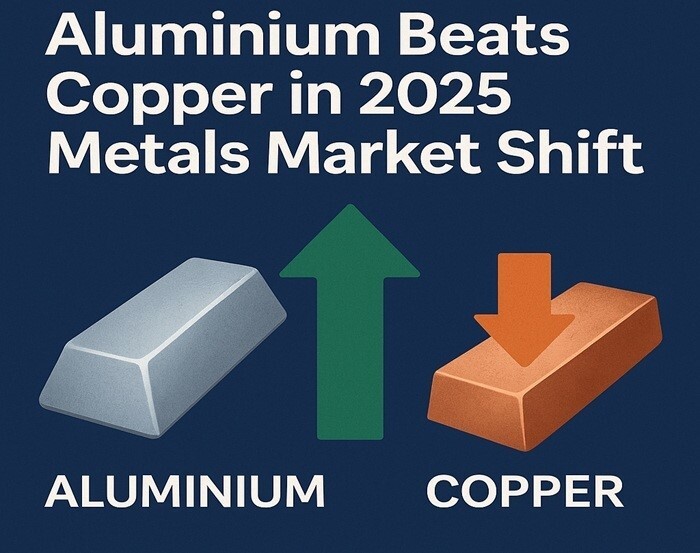

Throughout 2024 and continuing into 2025, copper markets have been unsettled by US trade investigations and persistent ore supply constraints, particularly in China, the world’s largest consumer and producer of copper. But it’s not just copper, global non-ferrous (and ferrous) metals are witnessing a broader transformation.

Investors and industries are increasingly pivoting from copper to aluminium, prompted by raw material shortages, elevated market volatility, and shifting global trade policies.
Copper under pressure: trade scrutiny and supply shortfalls
The US government’s Section 232 investigation into copper imports has significantly disrupted the market, sparking price volatility and triggering a sharp drop in fund participation. CME copper futures contracts plummeted from 134,000 to 82,000, reflecting investor retreat.
Meanwhile, in China, copper smelters are grappling with depleted concentrate stockpiles, which recently fell to just over 560,000 tonnes, their lowest in years. This shortage has forced output cuts.
Shanghai Metals Market (SMM) forecasts copper smelter production will decline to 1.168 million tonnes in August 2025, 0.5 per cent lower than July levels, with further drops expected in September due to maintenance at five smelters totalling 900,000 tonnes in capacity.
Aluminium stands firm: stable prices and strong inventory trends
In contrast, aluminium markets are showing notable resilience. According to a report from JP Morgan, copper price is expected to average USD 9,225 per tonne in H2 2025, a modest decline from May’s USD 9,532 per tonne. Aluminium, however, is projected to remain more stable, averaging USD 2,325 per tonne, only slightly below previous levels of USD 2,520 per tonne.
A key reason for this steadiness is aluminium’s favourable inventory-to-consumption ratio, which remains near 15-year lows. This balance has supported a solid price floor even as broader market conditions fluctuate.
Environmental push and policy support fuel aluminium's rise
China’s decade-old capacity caps on aluminium smelters and consistent steel output guidance continue to shape a disciplined supply environment. Unlike aluminium, copper smelting faces fewer such restrictions but is now hampered by constrained access to both primary ore and secondary feedstock like scrap.
China’s aluminium production reached 21.826 million tonnes in H1 2025, reflecting sustained output despite capacity limits. This production aligns with growing demand in sectors prioritising low-carbon materials such as automotive, construction, and renewable energy.
With its cost-efficiency, lightweight properties, and alignment with sustainability goals, aluminium is becoming an increasingly attractive substitute for copper in a wide range of applications. Analysts view this market realignment not merely as a response to supply shocks but as part of a larger transition towards more resilient, sustainable, and diversified supply chains.
Responses








